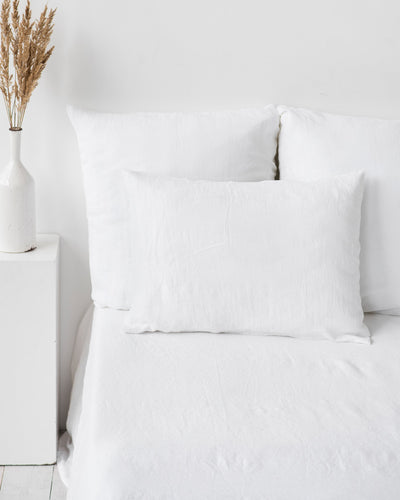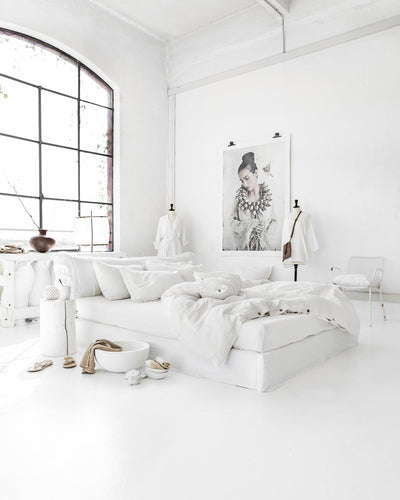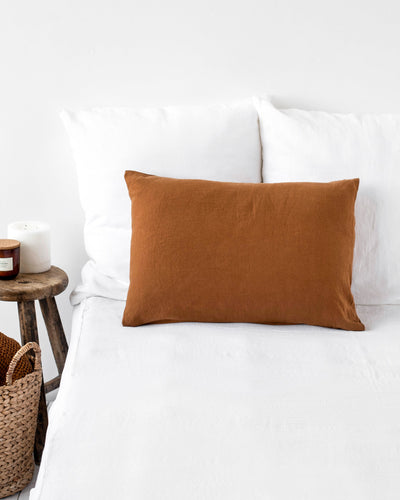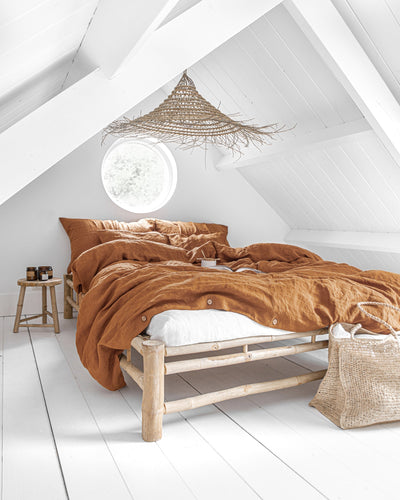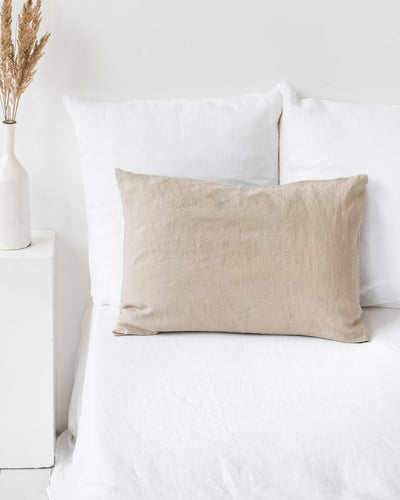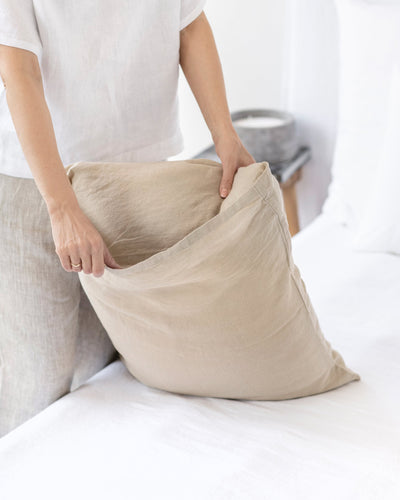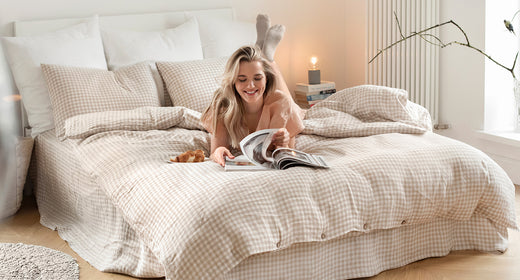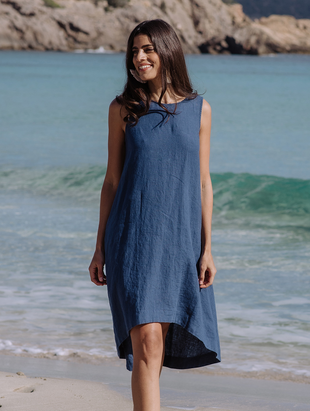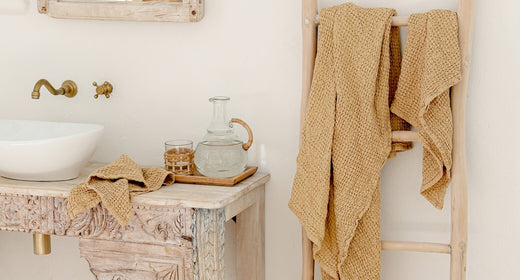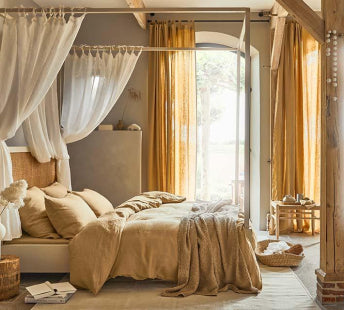The Ultimate Guide: Is Linen Bedding Worth It?

It's not surprising that linen bedding is becoming a favorite among those seeking both luxury and practicality in their sleep environment. Known for its breathability, durability, and unique aesthetic, linen offers a distinct experience compared to synthetic options.
In this comprehensive guide, we'll explore the ins and outs of linen bedding and address the overarching question, "Is linen bedding worth it?" We'll delve into its unique properties and what you need to consider before making the switch. Join us and learn what makes linen bedding so beloved by many.
What is Linen Bedding?

Linen bedding refers to bedsheets, pillowcases, duvet covers, and other bedding made from linen fabric. Linen is a plant-based textile made from the fibers of the stem of the flax plant (Linum usitatissimum). With a history dating back thousands of years, linen was regarded as a symbol of purity and was used for clothing, bedding, and ritual purposes. While today, some may regard linen as coarse, back then, linen products were considered fine and luxurious.
But how is linen bedding made? The process includes several steps:
- Harvesting: Flax is harvested in July when the plant matures. It must be pulled by the roots to maximize fiber length.
- Retting: The harvested flax then goes through the retting process, exposing the plant to moisture to separate it from the stem. The plant is soaked in water until the bacteria breaks down the pectin that holds the fibers together.
- Scutching: Next, the plant undergoes the scutching process, which involves separating the woody stem from the raw materials—the flax fibers. Short coarse fibers are used to make paper twine and rope, whereas the longer fibers are used to create linen yarn. This yarn can then be used to make clothing, bedding, and other textile products.
- Spinning: The final steps involve spinning the linen fibers into yarn, which is then woven into fabric. This linen fabric can then be bleached or dyed.
Is Linen Bedding Worth It?

When deciding whether linen bedding is worth the investment, consider several aspects, such as its durability, breathability, moisture-wicking ability, unique aesthetic, and more. Let's examine these factors in more detail.
1. Breathability and temperature regulation
Linen is renowned for its breathability, which results from its weave and the natural properties of the flax plant. The fibers are naturally hollow, allowing higher air permeability. This ventilation helps dissipate body heat and moisture, creating a comfortable sleeping environment. Moreover, linen is a natural insulator. This means linen bedding can keep you cool in the summer and retain heat from your body when it's cold.
Linen's superiority in terms of breathability becomes more apparent when compared to other bedding materials. For instance, although cotton is breathable, it can retain more moisture than linen, making it unable to wick moisture away from the skin as effectively as linen does.
2. Unique aesthetic
Linen has a naturally coarse texture that softens with use and washing. Its unique weave gives it a distinctive, slightly crumpled look, which adds to its charm. This unique aesthetic can significantly enhance the decor and style of your bedroom due to its timeless and versatile style. While you can get linen bedding in most colors and styles, neutral tones, earthy hues, and patterns can add a touch of sophistication and create a serene and calming environment.
3. Durability
Linen's reputation for durability and strength is well-deserved. Its long, robust fibers can withstand regular use and washing without compromising quality. While high-quality cotton can also be durable, linen typically outlasts cotton due to its stronger fibers and reduced susceptibility to pilling and fraying, providing a practical and long-lasting choice for your home textiles.
Moreover, as linen bedding becomes softer with each wash, it can last for years if you properly care for it. To properly care for your linen bedding, follow our linen care guide.
4. Moisture-wicking
Made from hollow flax fibers, linen can absorb moisture up to 20% of its own weight before starting to feel damp. This property allows linen bedding to quickly draw moisture from the body and release it into the air, maintaining a dry and comfortable sleeping environment. Linen bedding can also reduce the likelihood of night sweats, providing more restful and uninterrupted sleep. While other materials, such as cotton and bamboo, have moisture-wicking properties, they still retain more moisture, which can make the fabric feel damp and heavy.
5. Eco-friendly

Linen is fully biodegradable and easily recyclable, making it one of the most sustainable fabrics in the world. Linen production uses the whole flax plant, leaving no waste. Flax plant is a renewable resource that requires little care. They can grow in even poor-quality soil, don't require irrigation, and usually don't require pesticides. Moreover, flax plants are resilient and don't require a lot of water, making linen production less water-intensive than other textiles. A linen shirt uses 6.4 liters of water throughout its lifecycle, whereas a cotton shirt can use up to 2,700 liters.
Additionally, linen bedding is a sustainable and eco-friendly choice because it's durable and long-lasting, reducing the need for frequent replacement. At the end of its lifecycle, linen bedding can be composted or recycled, minimizing waste and environmental impact.
6. Hypoallergenic and antibacterial
Linen is hypoallergenic and resistant to common allergens like dust mites and mold. It's also free of pesticides and toxic dyes, which can cause allergic reactions. Linen bedding is a great option for sensitive skin, as it has antimicrobial properties. This is because linen can inhibit bacterial development due to its lignin content, which denatures bacterial proteins and limits their ability to reproduce. Another beneficial property of linen bedding is its moisture-wicking ability, which helps keep the skin dry and less prone to irritation. Linen bedding also outperforms other bedding materials, such as cotton, which can trap dust mites and moisture, even though it is a pure fiber.
Wrapping Up
Linen bedding stands out for its unique blend of comfort, durability, and natural elegance. From its breathability and moisture-wicking properties to its longevity and eco-friendliness, linen bedding has many benefits.
When choosing bedding, it's important to consider your personal preferences and priorities. If you prioritize a cool, comfortable night's sleep and appreciate the timeless elegance of natural fibers, linen is an investment that can pay off in both quality and style.
Frequently Asked Questions (FAQs)
Is linen bedding practical?
Yes, linen bedding is practical for several reasons. Linen is a strong and long-lasting fabric that is ideal for bedding. It also has excellent moisture-wicking and breathability properties, contributing to better sleep quality.
Why is linen bedding so expensive?
A key factor influencing the price of linen bedding is the meticulous craftsmanship and production process of transforming flax fiber into linen fabric. Another crucial factor is its durability. Additionally, linen production is more sustainable and has a lower yield per acre of flax than other materials, contributing to the higher cost.
How to wash linen bedding?
We recommend washing linen bedding separately in lukewarm water at 40°C/104°F or cold water in a gentle machine cycle. We also recommend using a mild detergent formulated for delicate or linen fabric and avoiding bleaching or detergents with color brighteners.
 United States
United States
